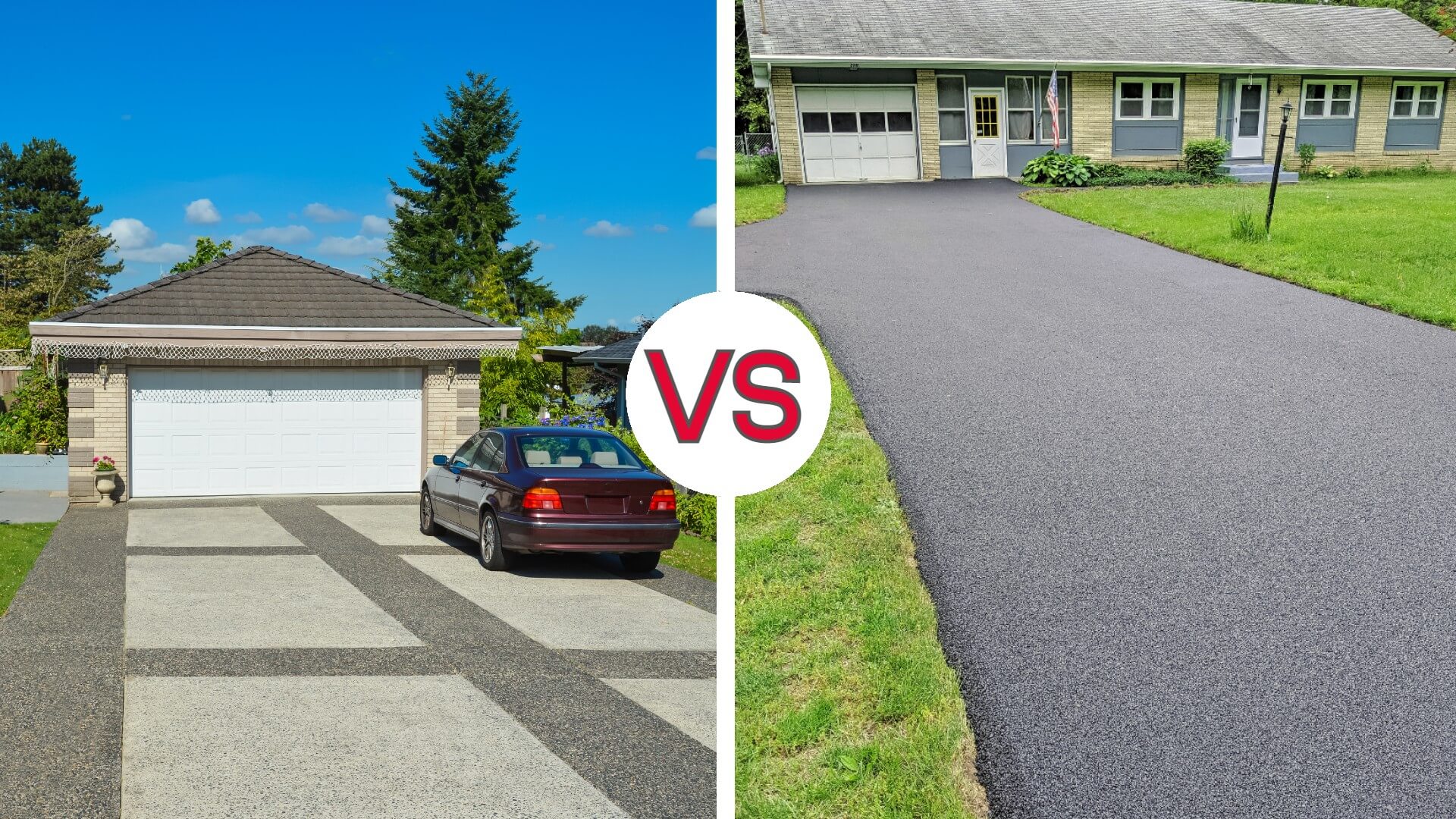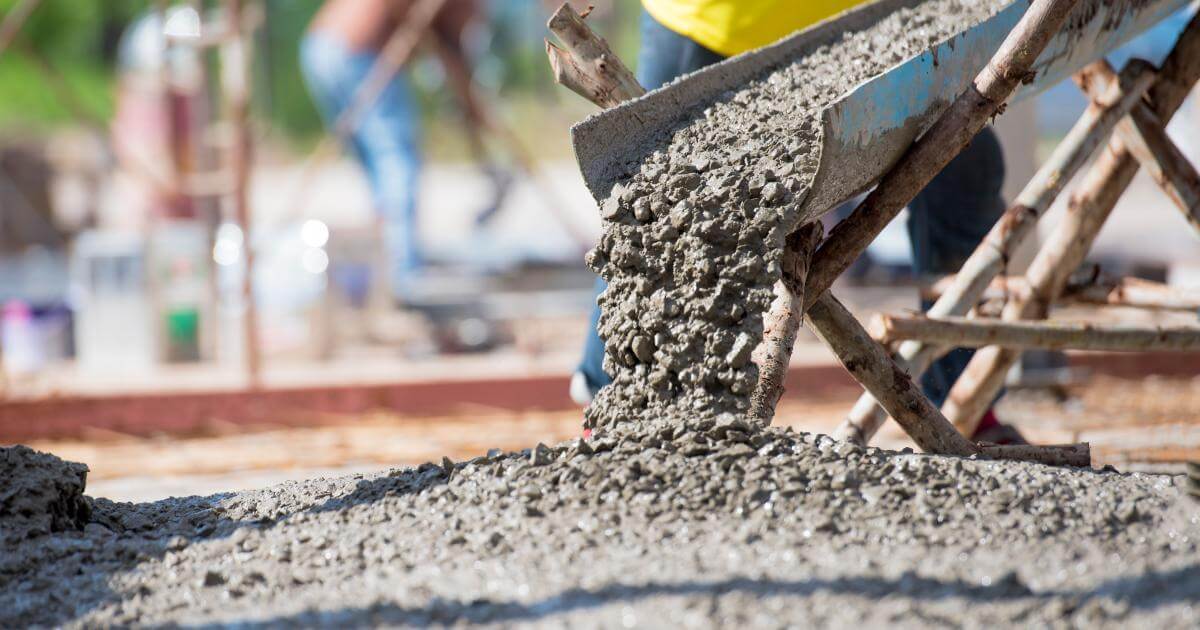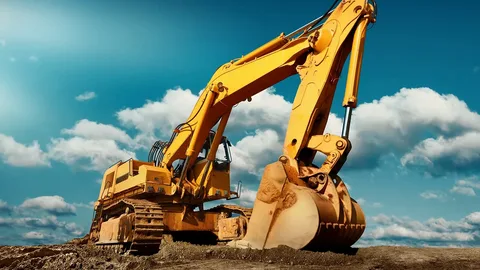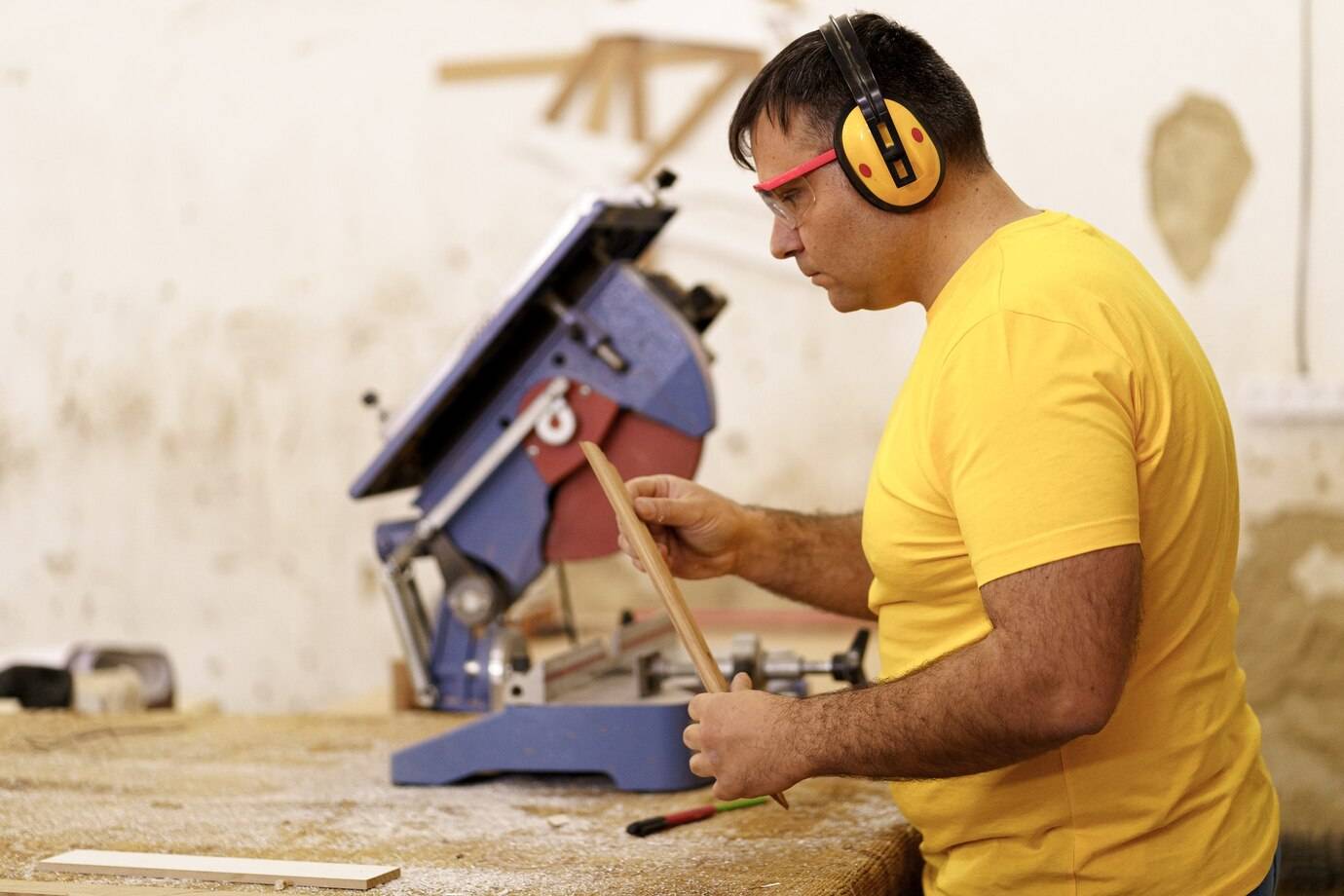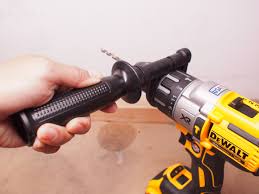
Drilling into concrete is tough because concrete is solid, hard, and has installed aggregate stones that can be obstacles to the drill bit. Drilling can instantly dull drill bits. When the bit encounters aggregate, the bit drags even more. The selected tool for drilling into it is a hammer drill.
How to drill into concrete without a hammer drill?
A hammer drill is separate from an ordinary rotary drill. Like a rotary drill, the hammer drill rotates. Unlike a rotary drill, it hammers while it rotates. Hammering helps to grind the concrete, while the rotation creates the hole.
1- Mark the center of the hole on the concrete, and insert a small-sized masonry drill bit in your drills chuck. Begin drilling into the concrete applying steady pressure on the drill. If any time you feel the drill bogging down back off some.
2- Gradually increase the size of the masonry drill bit until you hit the diameter you’re looking for. Increase the size of the drill bit by no more than 1/8 of an inch at a time and re-drill the hole.
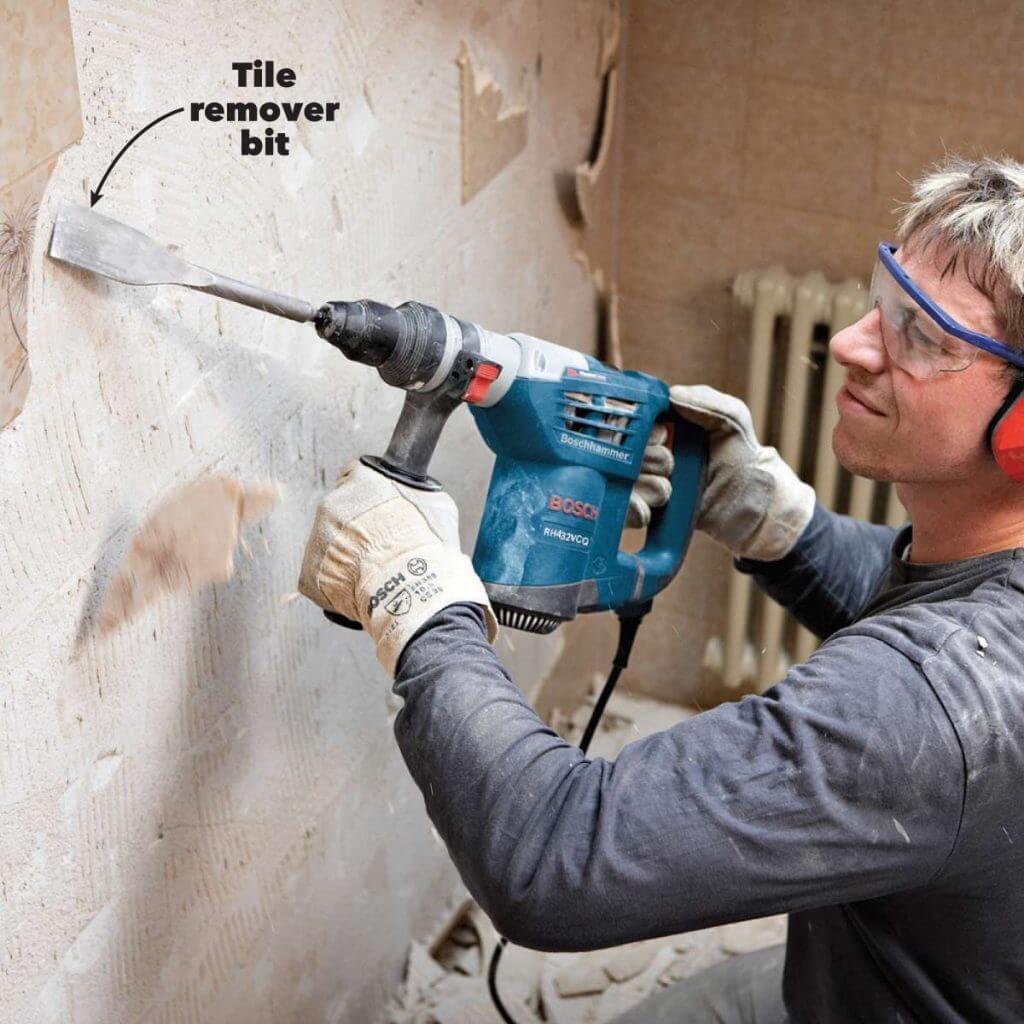
Read here about What is the difference between Cement and Concrete?
3- If you hit a spot in the concrete where you cannot get the drill bit to go any further stop and back out and increase the diameter of your drill bit as in step two. Once the hole is slightly larger take a hardened nail, place it in the hole and give a few whacks with a hammer to break up the aggregate you likely hit. Then continue like normal.
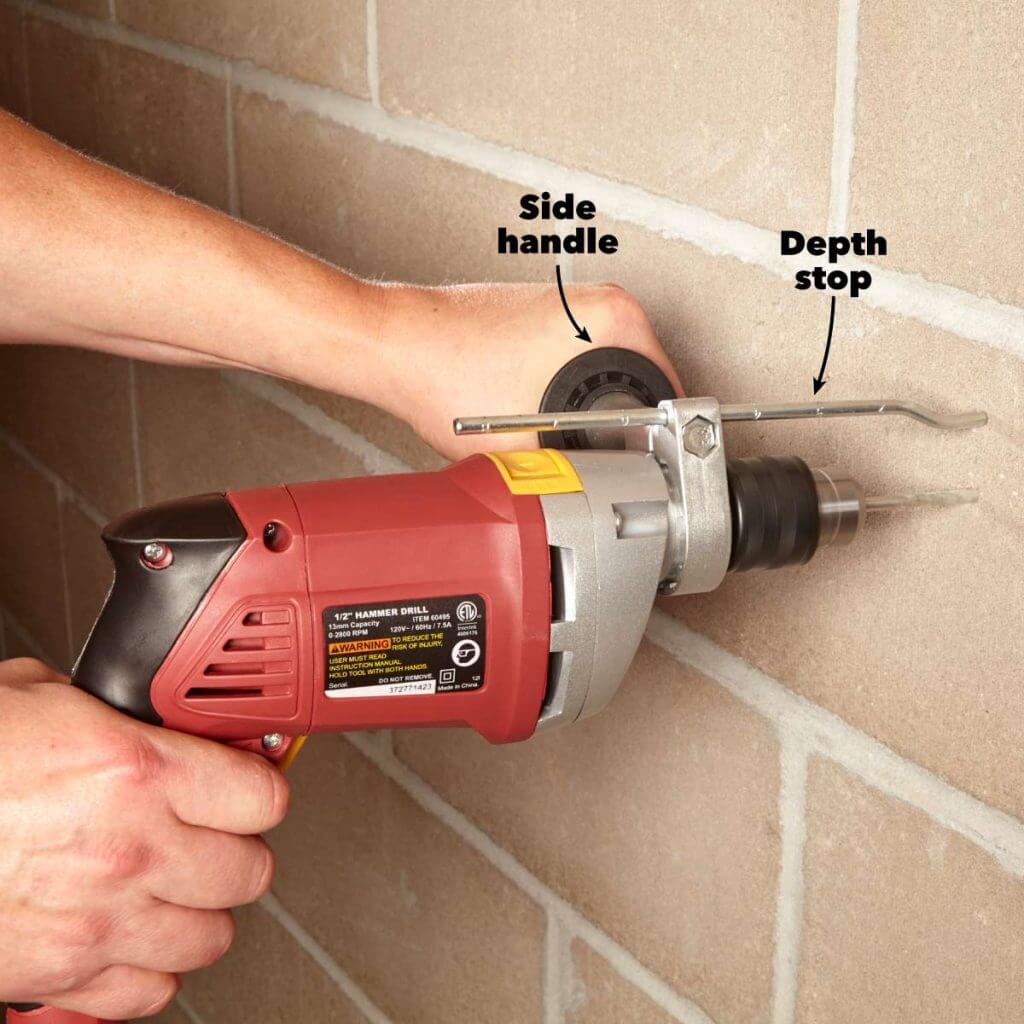
Where you’ll need to Drill into Concrete?
- Projects and remodels around the home that may require you to drill into concrete include:
- Installing shelves or hanging heavy mirrors on concrete block walls
- Hammering a concrete nail into concrete
- Installing metal anchors in concrete slabs when building wood-frame walls
- Drilling pilot holes for masonry screws
- Installing toilet closet flanges on concrete slabs
- Attaching footers for patios, pergolas, and other outdoor structures
Always use precaution gear when drilling into concrete: hearing protection, eye protection, a dust mask or respirator, heavy gloves, boots, and long sleeves.
[sc_fs_multi_faq headline-0=”h2″ question-0=”Drilling into Concrete Ceiling” answer-0=”Place the tip of the bit on the center of the first point on the plafond. While keeping the tool perpendicular to the cover outside press the trigger and work to drill into the concrete, functioning the “flatter effect” advantage on the drill. Drill solely to the measurement required for the fastener support.” image-0=”” headline-1=”h2″ question-1=”Drilling into Concrete Floor” answer-1=”If you’re only drilling one or couple stops for a minute scheme, a conventional drill is fine. Nevertheless, drilling cement is very easier with a hammer drill or a rotary hammer for large jobs. These tools fracture the pavement through accelerated hammering, then drill to shovel out the pulverized mineral.” image-1=”” headline-2=”h2″ question-2=”Best Drill for Concrete Walls” answer-2=”A hammer drill is ideal for light handiwork. It runs best at drilling holes in bricks, mortar, and cement bricks. But it can also ply the specific hole in the poured pavement.” image-2=”” headline-3=”h2″ question-3=”How to Drill a Hole in Concrete Foundation?” answer-3=”If you’re just drilling one or two holes for a little plan, a conventional drill is excellent. However, drilling concrete is much more comfortable with a club drill or a rotary club for large jobs. These tools crack the concrete through rapid hammering, then drill to dip out the shot plastic.” image-3=”” headline-4=”h2″ question-4=”How to Drill Hole Through Concrete?” answer-4=”If you hit an unusually hard piece of concrete, enter a workmanship nail in the corner and stick it in to tear up the concrete. Take care not to make the nail too long to easily separate. Insert your drill back and resume drilling.” image-4=”” count=”5″ html=”true” css_class=””]
